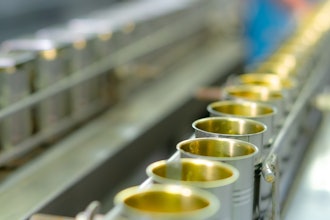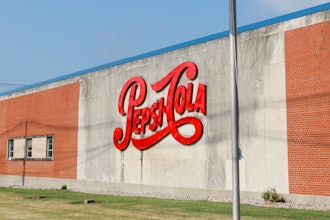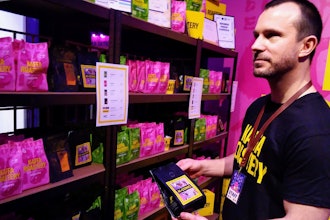X-rays have traditionally been associated with dental and medical treatments, but food manufacturers worldwide are becoming increasingly reliant on X-ray inspection equipment to ensure the safety and quality of their products.
X-ray systems are widely used to detect physical contaminants, as well as perform a variety of integrity checks, such as measuring mass, counting components, monitoring fill levels, measuring head space, inspecting product-in-seal, and checking for damaged products and packaging. In addition to helping to protect consumers' welfare and safeguard brand reputations, X-ray inspection has become increasingly important in helping manufacturers comply with food safety regulations and retailers' standards.
Despite the plethora of benefits food X-ray inspection offers, however, some manufacturers still have reservations about adopting the technology as a method of product inspection. Their primary concerns are that consumers may switch to a brand that hasn't been X-rayed and that their staff will object to working with X-rays. This is because X-rays are a type of radiation.
What is Radiation?
Radiation is generally defined as energy from a given source and two main forms exist: natural and man-made. Examples of natural radiation include natural heat or light from the sun, radiation from the ground, and gamma rays from radioactive elements. Examples of man-made radiation include microwaves from an oven and X-rays from an X-ray tube.
X-rays are a form of electromagnetic radiation and are invisible, like light or radio waves. All types of electromagnetic radiation are part of a single continuum known as the electromagnetic spectrum. The spectrum runs from long-wave radio at one end to gamma rays at the other.
X-rays are used for many different purposes and it's important not to confuse those used for food inspection with radioactive materials, such as uranium. Radioactive materials are physical sources of radiation, which emit radiation continuously and can't be switched off. By contrast, X-rays used for food inspection can be switched on and off, like light from a bulb. When the electricity supply to the X-ray system is switched off, the flow of X-rays ceases instantaneously.
Background Radiation – There's No Escaping It
Everyone's exposed to background radiation; it's all around us and includes radiation from natural and man-made sources. In fact, natural sources of radiation account for approximately 80 percent of the total radiation most of us receive and there's little we can do to escape it. After all, it's impossible to stop eating, drinking or breathing.
Did you know, for example, that eating a banana every day for a year will expose you to 36.5 μSv¹ a year of radiation? Or that frequent fliers absorb around eight percent more radiation (200 μSv a year), compared to non-fliers?
Each member of the world population is exposed to approximately 2,400 μSv of ionizing radiation from natural sources every year, which far exceeds the radiation exposure received from a properly-installed and maintained X-ray inspection system.
X-ray Inspection Doesn't Harm Food
Food that passes through an X-ray system spends less than one second in the X-ray beam. During this brief time, it receives an incredibly low dose of radiation.
Scientific evidence also shows that X-rays don't harm food. A 1997 study by the World Health Organization (WHO) confirmed that radiation levels up to 10,000 gray² don't affect a food's safety or nutritional value. This dose is around ten million times stronger than that used in food inspection.
Food that's been X-rayed is indistinguishable in every respect from food that hasn't, it's as good and tasty to eat as it was before it was scanned and there are no measurable changes to flavors, textures or nutritional values.
What's more, the amount of radiation production staff are exposed to while operating an X-ray system in the food industry is far less than the amount we absorb from naturally-occurring background radiation.
X-ray Systems Are NOT a Health Hazard for Humans
Food x-ray systems are designed to ensure a perfectly safe working environment for operators. X-rays are electrically generated, which means they can be turned on and off, and X-ray generators are enclosed in cabinet systems to protect users from the effects of radiation.
A factory containing correctly maintained and well managed X-ray equipment is just as safe as any other properly controlled and monitored working environment. Providing X-ray systems are built to comply with the Ionizing Radiation Regulations 1999 and the American Standard 1020.40 CFR, and safety guidelines are followed, there's no reason why anyone, even pregnant women, can't operate X-ray equipment.
In a Nutshell
The word 'radiation' can provoke different reactions and is often misunderstood. It's okay to be wary of radiation, but it doesn't mean we should be concerned about using X-rays for food inspection.
Radiation levels used for X-ray inspection in the food industry are extremely low and have no effect on a food's safety, flavor, texture or nutritional value. Moreover, the use of X-ray inspection equipment's both highly regulated and operates within very high safety limits. Providing operators follow safety guidelines, modern X-ray systems provide a perfectly safe working environment within the food industry.
In reality, the real risk to human health comes from physical contaminants. Therefore, as X-ray inspection provides unrivaled detection and rejection of a wide range of contaminants, including glass, metal, mineral stone, calcified bone, and high-density plastics and rubber, it should be regarded as a force for improving food safety, not reducing it.
Read Safeline X-ray's new White Paper 'How Safe is X-ray Inspection of Food?' to find out more.
¹The unit of radiation dose is the Sievert (Sv). As occupational radiation levels are normally low, smaller units - millisievert (mSv: a thousandth of a sievert) or microsievert (μSv: a millionth of a sievert) – are more commonly used.
²The 'gray' (Gy) is a measure of the absorbed dose of radiation, and is defined as the absorption of one joule of radiation energy by one kilogram of matter.






















